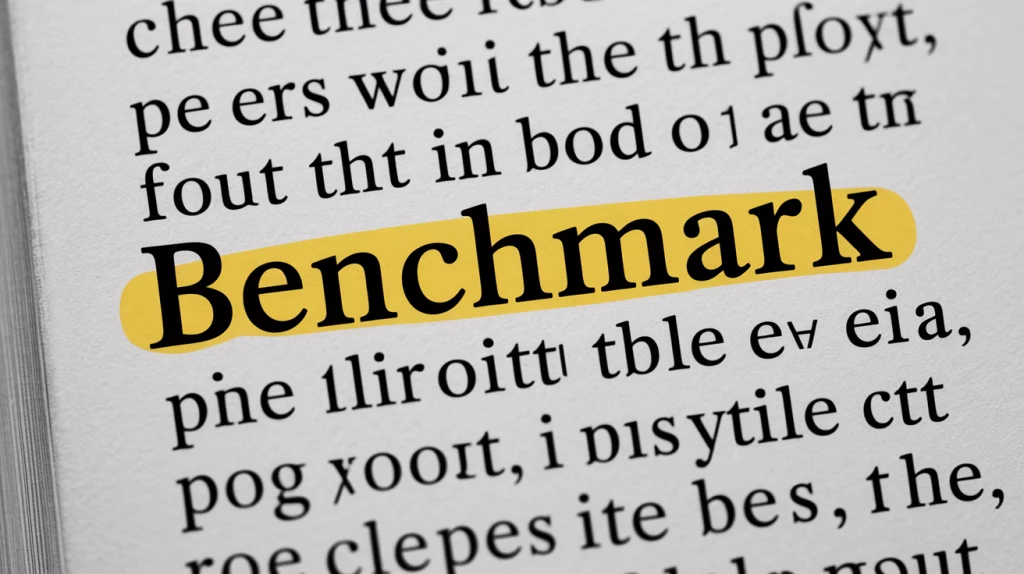Grievance procedures are a crucial component of any well-functioning workplace. They provide employees with a structured process to address concerns or disputes related to employment. In this comprehensive guide, we’ll explain what a grievance procedure is, outline the 5 steps of grievance procedure, and provide a grievance procedure template letter you can use to initiate the process. Whether you are an HR professional, employer, or employee, this guide offers the insights and tools needed to manage workplace grievances effectively.
What Is a Grievance Procedure?
A grievance procedure is a formal process through which an employee can raise concerns or complaints regarding workplace issues. These concerns might involve working conditions, relationships with colleagues or supervisors, discrimination, harassment, or violations of employment contracts.
Having a clear and well-documented grievance procedure process is vital for maintaining a healthy workplace culture and minimizing legal risks, as well as a conflict resolution procedure in the workplace.
Why Is a Grievance Procedure Important?
- It fosters open communication.
- It ensures fair treatment for all employees.
- It reduces workplace tension and conflict.
- It helps resolve issues before they escalate into legal disputes.
- It demonstrates organizational commitment to ethical practices.
- It provides a platform for both management and staff to voice their perspectives constructively.
- It ensures that employee concerns are recorded and addressed in a timely manner.
What are the Grievance Procedures variations?
While different organizations may have unique variations, the grievance procedures typically follow a consistent structure. The following is a general overview of the standard process used across many workplaces.
The 5 Steps of Grievance Procedure
Step 1: Informal Discussion
The first step in any grievance procedure is to attempt an informal resolution. Employees are encouraged to raise their concerns directly with their line manager or HR representative. In many cases, simple misunderstandings or minor issues can be resolved quickly through open communication.
Open dialogue can often prevent more formal steps from becoming necessary. Managers should be approachable and well-trained to identify and address problems early.
Step 2: Submit a Formal Grievance
If informal discussions don’t resolve the issue, the employee should submit a written complaint. This is where a grievance procedure template letter becomes useful. The letter should include:
- A clear statement of the issue.
- Relevant dates and details.
- The steps already taken to resolve the issue informally.
- Desired outcomes or resolutions.
Formal grievances must be submitted according to company policy guidelines, which may specify timeframes and documentation protocols. Keeping a copy of the letter and any correspondence is essential for record-keeping.
Step 3: Investigation
Once the formal grievance has been received, the employer should initiate an investigation. This step includes:
- Gathering evidence and documentation.
- Interviewing relevant parties.
- Maintaining confidentiality.
The purpose of the investigation is to gain a full understanding of the issue and determine whether any company policies or legal standards have been breached.
A neutral investigator should be assigned to ensure fairness. Depending on the severity of the grievance, external consultants or legal advisors may be involved.
Step 4: Formal Meeting and Decision
Following the investigation, a formal grievance hearing is held. The employee has the right to be accompanied by a colleague or a union representative during the meeting. The employer then delivers a decision, usually in writing, summarizing:
- Findings from the investigation.
- Any action that will be taken, such as disciplinary action.
- The employee’s right to appeal the decision.
This stage allows the employee to present their case and respond to any counterclaims or findings. Transparency and clear communication are crucial at this juncture.
Step 5: Appeal
If the employee is not satisfied with the outcome, they may appeal the decision. The appeal should ideally be heard by someone not involved in the original grievance handling. A final decision will be issued after reviewing all evidence and documentation anew.
The appeal process should be outlined clearly in the company’s grievance procedures, including deadlines and submission formats.
Grievance Procedure Template Letter
[Your Name]
[Your Address]
[City, State, ZIP Code]
[Email Address]
[Phone Number]
[Date]
To: [Manager’s Name or HR Department]
[Company Name]
[Company Address]
Subject: Formal Grievance
Dear [Manager’s Name],
I am writing to formally raise a grievance concerning [brief description of issue]. Despite my efforts to resolve this matter informally, the issue remains unresolved.
The issue began on [date], when [detailed explanation of the situation]. I have attempted to address this concern by [describe steps taken]. However, the problem persists.
I would appreciate it if you could investigate this matter and take appropriate steps to resolve it. I am available to attend a meeting at your convenience to discuss the issue further.
Sincerely,
[Your Name]
Understanding the Union Grievance Procedure
In unionized workplaces, the grievance procedure process may include additional steps or requirements. The union grievance procedure often includes:
- Representation by a union delegate.
- Collective bargaining agreement stipulations.
- Specific timeframes for each grievance stage.
Union procedures may be more formal and require strict adherence to documentation and deadlines. Still, they are designed to protect workers’ rights and ensure due process.
Employees represented by a union should familiarize themselves with the agreement governing their employment, as these documents may contain specialized rules for resolving disputes.
Best Practices for Implementing Grievance Procedures
Employers should follow best practices to ensure their grievance procedures are effective, including:
Clear Policy Documentation
Make sure your grievance procedures are outlined in employee handbooks or policy manuals. Use simple language and include all relevant steps and contacts. Make these documents easily accessible to all staff.
Regular Training
Provide training sessions for managers and HR staff on how to handle grievances properly and fairly. Role-playing scenarios and legal case studies can help improve understanding and responsiveness.
Encourage Early Reporting
Foster a company culture where employees feel safe reporting issues early, reducing the chance of escalation. Offer anonymous reporting tools if necessary.
Maintain Confidentiality
Protect the identity and privacy of all parties involved in a grievance to build trust and integrity. Avoid gossip or informal sharing of sensitive grievance information.
Record Keeping
Maintain records of all grievances, investigations, meetings, and decisions for legal and organizational reference. Digital HR systems can help organize and secure these files.
Common Types of Workplace Grievances
Workplace grievances can cover a wide range of issues. Common examples include:
- Harassment or discrimination
- Bullying or intimidation
- Pay or wage disputes
- Unsafe working conditions
- Violations of employment contracts
- Workload or scheduling issues
- Unfair treatment or favoritism
- Denial of promotions or training opportunities
Recognizing these common grievances can help employers identify systemic issues and promote fair practices across departments.
Legal Considerations
Depending on the jurisdiction, grievance procedures may be legally required. Employers should stay informed about national and local labor laws to ensure compliance. In the UK, for example, the Acas Code of Practice provides a legal framework for grievance handling.
Failure to follow fair grievance procedures can lead to legal claims, including unfair dismissal or discrimination cases. Employers may also face reputational damage, penalties, or tribunal costs.
Legal counsel should be consulted when implementing or revising grievance procedures, especially in multinational organizations with varied legal obligations.
Supporting Employees Through the Process
Handling a grievance can be stressful for the employee involved. Employers should provide emotional and procedural support throughout the process.
Offer Access to Counseling or EAPs
Employee Assistance Programs (EAPs) and mental health resources can support staff dealing with workplace conflict.
Communicate Clearly and Timely
Regular updates and clear timelines can help reduce anxiety and uncertainty. Let the employee know what to expect at each step.
Foster a Positive Environment Post-Grievance
Once the grievance has been resolved, the organization should work to rebuild trust and address any lingering effects. Team-building exercises or follow-up meetings can be beneficial.
When to Involve External Mediators
In some cases, internal grievance handling may not be enough. Bringing in an external mediator or arbitrator can help when:
- There is a breakdown in trust between the parties.
- The matter is particularly complex or sensitive.
- Internal processes have failed or lack neutrality.
Mediation promotes compromise and preserves working relationships, often avoiding more adversarial or legal outcomes.
Legal Framework in Colombia
In Colombia, labor relations are primarily governed by the Colombian Labor Code (Código Sustantivo del Trabajo) and supervised by the Ministry of Labor. While the law does not mandate a formal “grievance procedure” in the same structured way as UK (Acas) or US (EEOC) systems, Colombian labor law emphasizes:
- Right to fair treatment
- Due process in disciplinary actions
- Right to defense and appeal
- Freedom of association and union representation
- Protection against unjust dismissal
Grievance-like issues (e.g., harassment, unfair treatment, or contract disputes) are often handled through internal workplace policies, union representation, or direct claims filed with the Ministry of Labor or labor courts. Learn more about hiring Colombian talent with this complete guide about payroll and labour laws in Colombia
Internal Grievance Procedures in Colombian Companies
Many private employers—especially large corporations and multinationals—implement internal grievance mechanisms similar to international standards. These typically include:
- An internal code of conduct or employee handbook
- Channels to report harassment, discrimination, or workplace abuse
- A process for documenting and investigating complaints
- Escalation to HR or legal departments
- Option to request conciliation or mediation
Conclusion
A well-structured grievance procedure is essential for fostering a fair and respectful workplace. It benefits both employees and employers by offering a transparent way to resolve conflicts. By following the 5 steps of grievance procedure and using a grievance procedure template letter, organizations can address issues promptly, lawfully, and constructively.
Whether dealing with an informal concern or navigating the union grievance procedure, having a consistent process helps ensure all employees are treated with dignity and fairness. Implementing effective grievance procedures is not just a compliance measure—it’s a commitment to a positive organizational culture.


